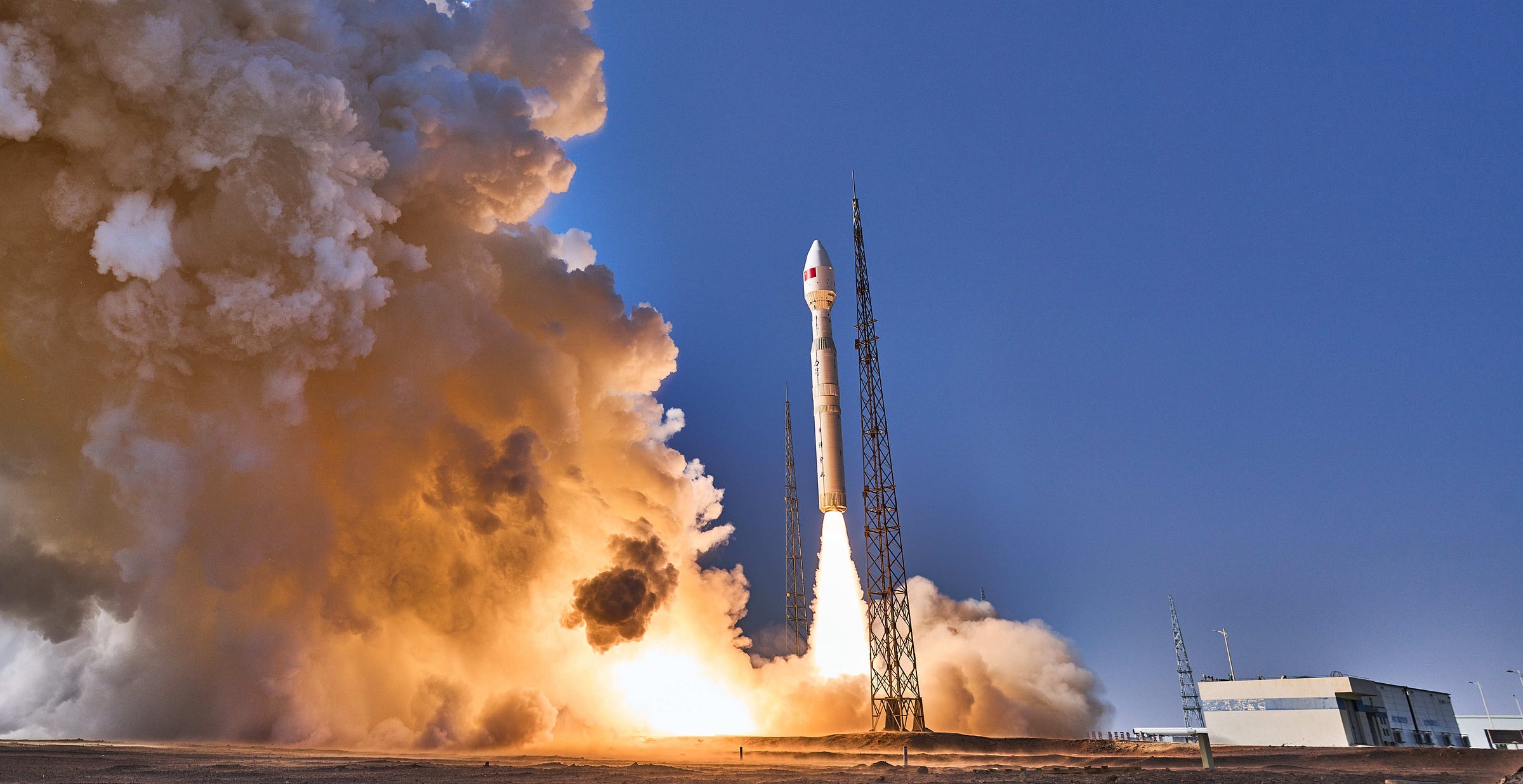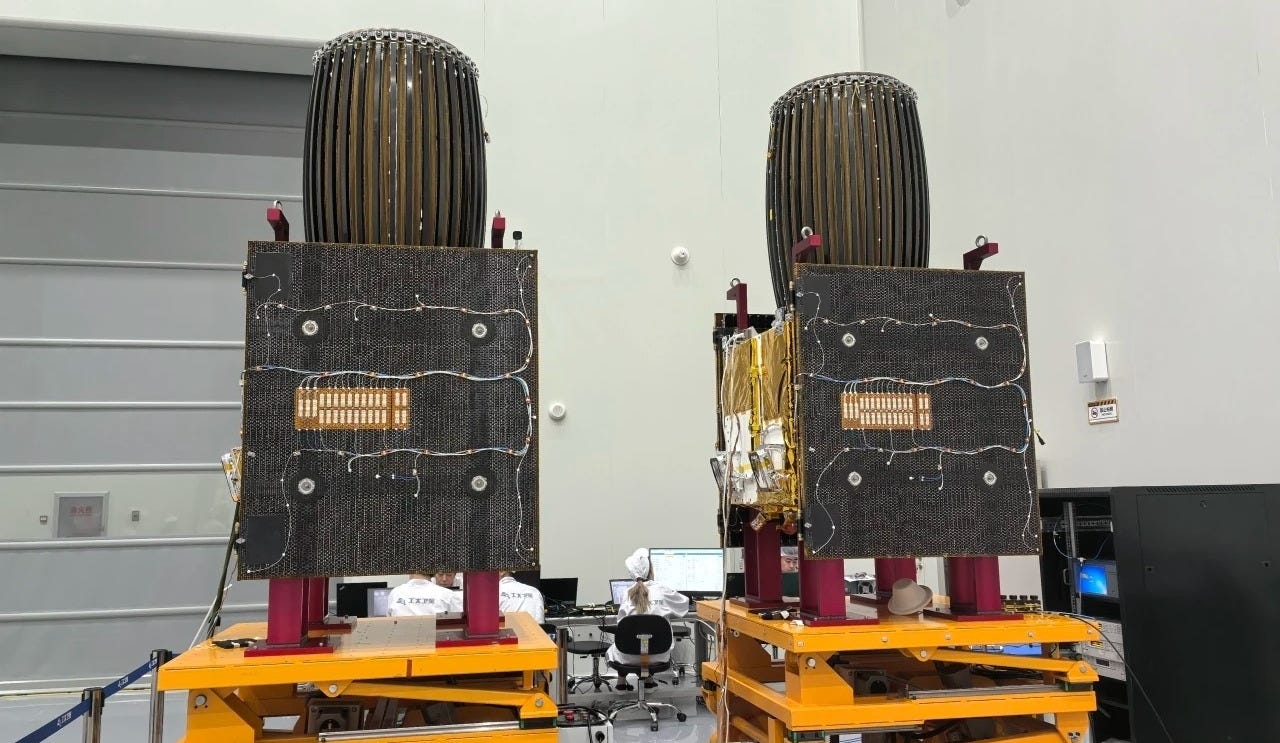Pakistan Launches Privately With CAS Space [Kinetica-1 Y8]
The solid-fuelled rocket has successfully performed its third international customer-carrying mission.

At 11:33 am China Standard Time (03:33 am Universal Coordinated Time) on October 19th, CAS Space’s Kinetica-1 rocket blasted off from Launch Area 130 at the Jiuquan Satellite Launch Center, carrying three satellites into sun-synchronous orbit.
One of the spacecraft heading into space was Pakistan’s PRSC-HS1, the country’s first hyperspectral imaging satellite. According to reports before and after the launch, imagery collected across various spectral bands will be used to support crop monitoring, natural resource monitoring, disaster responses, and city planning. The Innovation Academy for Microsatellites, Chinese Academy of Sciences (中国科学院微小卫星创新研究院) says they developed the spacecraft.
The other two satellites onboard were AIRSAT-03 (中科卫星03星) and AIRSAT-04 (中科卫星04星), both weighing 270 kilograms for X-band synthetic aperture radar remote sensing tasks with a claimed resolution of below 0.5 meters. To assist in data collection, AI processing is said to be part of the two spacecraft’s capabilities. Once commissioned, the two AIRSAT satellites are planned to be used for natural resources monitoring, agricultural support, disaster responses, water resource management, and urban planning. AIRSAT-03 will also gather data around Malaysia, with that data portion processed by TerraXpace.
After launch, CAS Space and reports were keen to point out that Kinetica-1 is China’s only private sector launch solution to carry payloads for foreign customers. On the launch vehicle’s last outing, two satellites were launched for Mexico, and back in November 2024 an Omani spacecraft was delivered.
As with the last launch, CAS Space is looking into ways to make Kinetica-1 a more affordable launch solution for both Chinese and global customers. Ways to launch fifty satellites in one mission may be part of that.
Today’s launch was the 9th launch for Kinetica-1 and for CAS Space. This was also the 65th launch from China in 2025.
Liftoff video via 大漠问天 on WeChat. Recap video from CAS Space on Weibo.
Check out the previous launch from CAS Space
International Business for CAS Space [Kinetica-1 Y10]
Out of Launch Area 130 at the Jiuquan Satellite Launch Center at 15:33 China Standard Time (07:33 am Universal Coordinated Time) on August 19th, CAS Space’s Kinetica-1 flew into sun-synchronous orbit carrying multip…
What is Kinetica-1?
This section is for those less familiar with China’s various commercial launch vehicles.
Kinetica-1 is CAS Space’s first launch vehicle and consists of four stages, all burning solid fuel. CAS Space offers the ability to launch a single satellite to utilize all of the rocket’s payload capacity, however more ‘rideshare’ missions occur for multiple satellites to be delivered in one launch.
The payload capacity of the launch vehicle is currently as follows:
2,000 kilograms to low Earth orbit
1,500 kilograms to a 500-kilometer sun-synchronous orbit
The first-stage is powered by a solid rocket booster that burns an unspecified solid fuel, generating 200 tons of thrust. The second-stage is also powered by a solid rocket booster, producing 110 tons of thrust with the same unidentified propellant. The-third stage, also using the undisclosed propellant, generates 45 tons of thrust. Finally, the fourth-stage is powered by another solid rocket booster, providing 8 tons of thrust with the same solid propellant.
On its launch pad, Kinetica-1 stands at 30 meters tall. The first two stages have a diameter of 2.65 meters, the fairing has a diameter of either 2.65 or 3.35 meters. When prepared for launch Kinetica-1 weighs a believed 135,000 kilograms.
So far, Kinetica-1 has flown all of its missions from CAS Space’s launch facility at the Jiuquan Satellite Launch Center.




![International Business for CAS Space [Kinetica-1 Y10]](https://substackcdn.com/image/fetch/$s_!PvqB!,w_1300,h_650,c_fill,f_auto,q_auto:good,fl_progressive:steep,g_auto/https%3A%2F%2Fsubstack-post-media.s3.amazonaws.com%2Fpublic%2Fimages%2F73228a82-626c-4e17-9fd8-1212ce76f884_3352x1697.jpeg)

Pakistan has to play it smart from here on out and not mess up this partnership